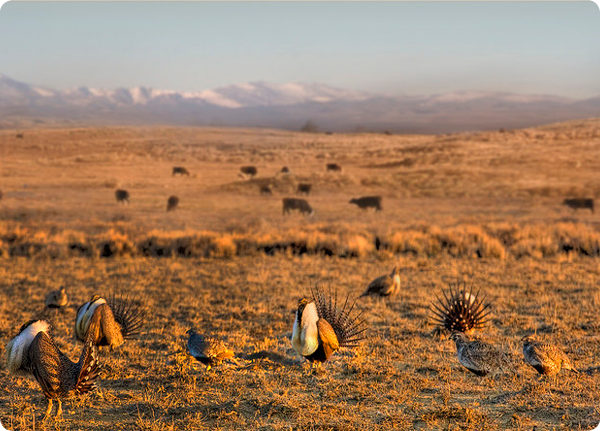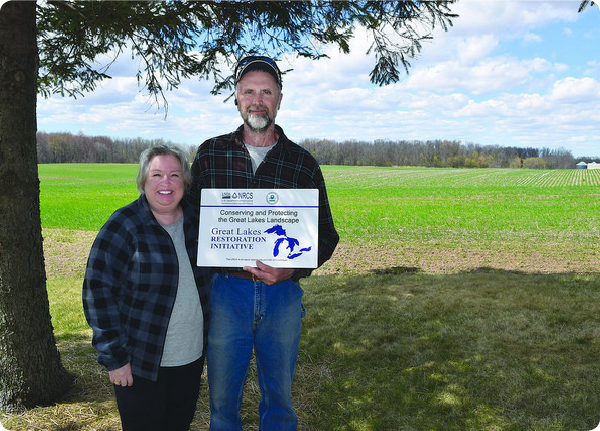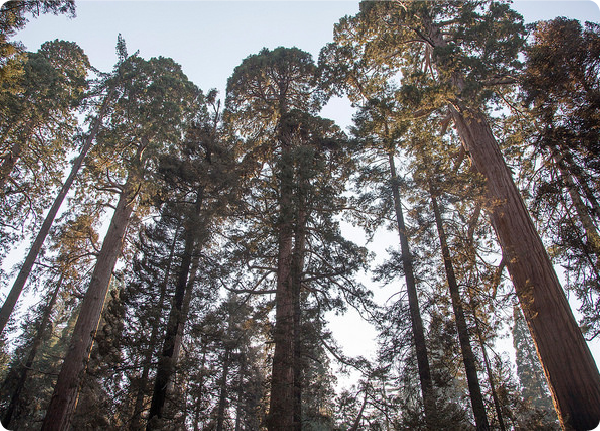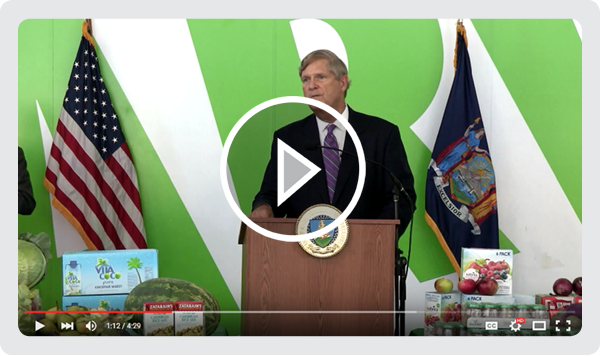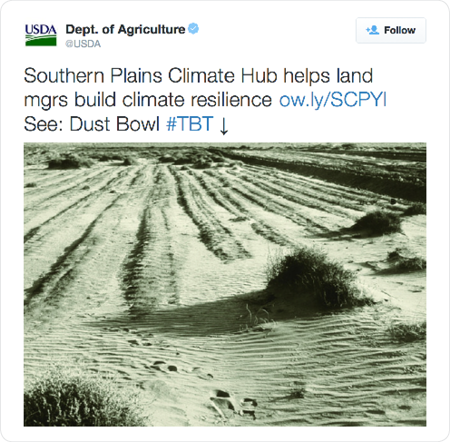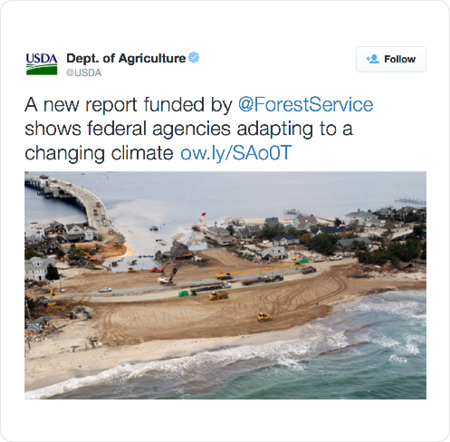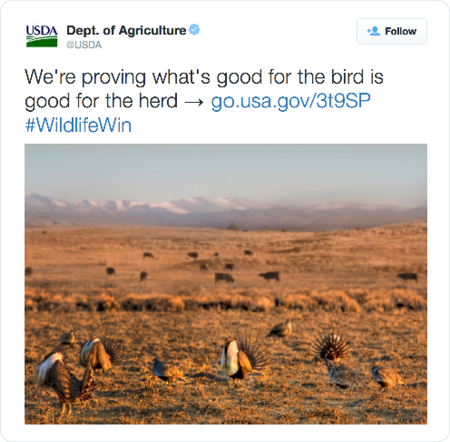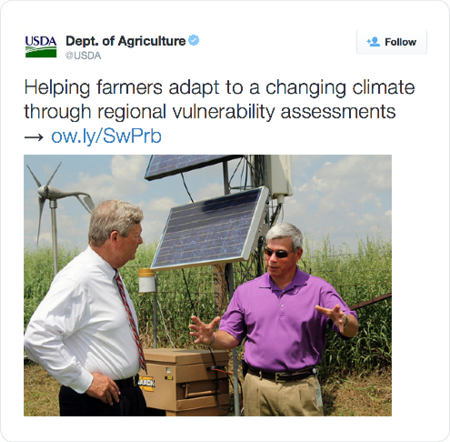Having trouble viewing this email? View it as a Web page.
|
Last week, we saw how strategic investments in conservation and habitat restoration can have a big impact for our nation’s ecosystems.
The greater sage grouse thrives in the sagebrush landscape of the West.
Late Blight: A Ripening Issue for Central Pennsylvania Farmers Perhaps there is such a thing as too much of a good thing. Many farmers in central Pennsylvania would aptly agree to this notion after experiencing above average amounts of rainfall this summer.
As the fall season slowly matriculates and the autumn equinox makes its debut, volunteers are encouraged to give back by participating in the annual National Public Lands Day.
Some people are born to farm. Others grow to love it. Greg Nettekoven was born into a farm family, and he and his wife, Karon, have grown to love farming.
New Perspectives on the Dynamics of Dry Lands Vast acreage of dry lands may evoke images of a desolate, scorched desert that is uninhabitable to humans. But the arid and semi-arid dry lands of about half of both the United States’ and the world’s land surfaces actually are complex ecosystems made up variously of grasses, shrubs, agriculture, and even urban dwellers.
The U.S. Southern Plains states have always been known for their wild weather. Stories of the volatile climate of this region abound.
Pine Creek wanders through prairies and rocky bluffs, and forests and pastures, including the land where Ryan Pulley raises beef in southeastern Minnesota. Pine Creek is beautiful – fed by limestone springs and home to freshwater trout.
Preparing for the effects of climate change, the U.S. Forest Service has taken the lead in a new report that highlights actions taken by federal agencies to adapt to a changing climate.
Today marks an historic win for conservation and communities in the West and for the United States.
Just over a year after the establishment of the USDA Climate Hubs, we are keeping our promise of “developing the next generation of climate solutions” through regional vulnerability assessments.
Producing high quality, nutritious milk may be a top priority for Coldsprings Farm, but it is not the farm’s only accomplishment.
In this edition of USDA Week In Review: Tall wood buildings in the Big Apple, reducing food waste, protecting the sage grouse, safe and healthy food cooking, and National Hispanic Heritage Month
Sage grouse plan aims for balance between industry, wildlife (Associated Press) The greater sage grouse, a ground-dwelling bird whose vast range spans 11 Western states, does not need federal protections, the Interior Department said Tuesday, following a costly effort to reverse the species’ decline without reshaping the region’s economy.
The U.S. Department of Interior has decided that the greater sage grouse, a peculiar and distinctly Western bird, does not need protection under the Endangered Species Act.
Fighting wildfires isn’t cheap, not with all the boots on the ground, the engines and dozers, the airplanes and fuel. And this year’s fire season — which is shaping up to be one of the most destructive in the modern history of the West — is also on track to be the costliest.
If you haven’t thought much about food waste, now is the time. America wastes epic amounts of food: 133 billion pounds worth $162 billion annually, according to the U.S. Department of Agriculture.
The amount of land burned by wildfires in the U.S. this year has surpassed 9 million acres, according to data released Thursday by the National Interagency Fire Center.
Vilsack: In a nation preoccupied by food, one vital question goes unasked (The Hill) As a nation, we spend a lot of time preoccupied by our food. How was it grown? How much will it cost? Have I eaten too much, or will I get enough to eat? Here’s a question that is perhaps not asked enough: how much food ends up not on our plates, but in the trash? You might be surprised.
ENCOURAGING FAMILIES TO VISIT THE GREAT OUTDOORS Broadcast Date: Thu, September 24, 2015 Fee-free days, and the Every Kid In A Park initiative, are among the opportunities families can take to enjoy federal public lands like national forests. (Rod Bain and Joe Meade of the US Forest Service)
NATIONAL PUBLIC LANDS DAY VOLUNTEER INCENTIVES Broadcast Date: Wed, September 23, 2015 Those participating in the nation's single largest volunteer effort could earn a fee free pass to our nation's forests or other federal lands. (Rod Bain and Joe Meade of the US Forest Service)
ACTUALITY: NATIONAL PUBLIC LANDS DAY Broadcast Date: Wed, September 23, 2015 Joe Meade of the U.S. Forest Service explains the context and scope of National Public Lands Day on Saturday, September 26th.
MAJOR EFFORT KEEPS SAGE-GROUSE OFF THE ENDANGERED SPECIES LIST Broadcast Date: Tue, September 22, 2015 A huge conservation effort has succeeded in keeping the greater sage-grouse off the Endangered Species List. (Gary Crawford, Interior Secretary Sally Jewell and Under Secretary of Agriculture Robert Bonnie)
ACTUALITY: USDA'S SAGE GROUSE EFFORTS DESCRIBED Broadcast Date: Tue, September 22, 2015 Under Secretary of Agriculture for Natural Resources and Environment Robert Bonnie describing some of the investments USDA has made in its Sage Grouse Initiative.
ACTUALITY: OFFICIAL SAYS SAGE GROUSE WORK NOT DONE Broadcast Date: Tue, September 22, 2015 Dan Ashe, Director of the U.S. Fish and Wildlife Service, saying that unless work continues to help the sage grouse, it is likely to be a candidate again for the Endangered Species List.
ACTUALITY: CALIFORNIA DROUGHT FUELING WILDFIRES Broadcast Date: Tue, September 22, 2015 USDA meteorologist, Brad Rippey, says California remains critically dry during this fourth consecutive year of drought, with one of the manifestations in recent weeks being devastating wildfires.
|




